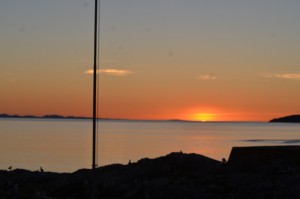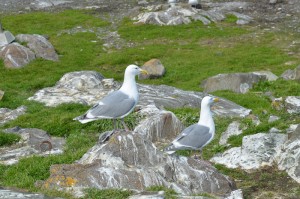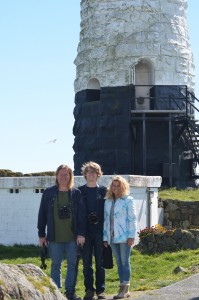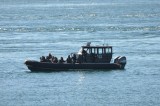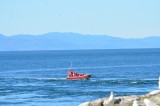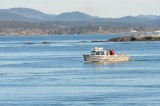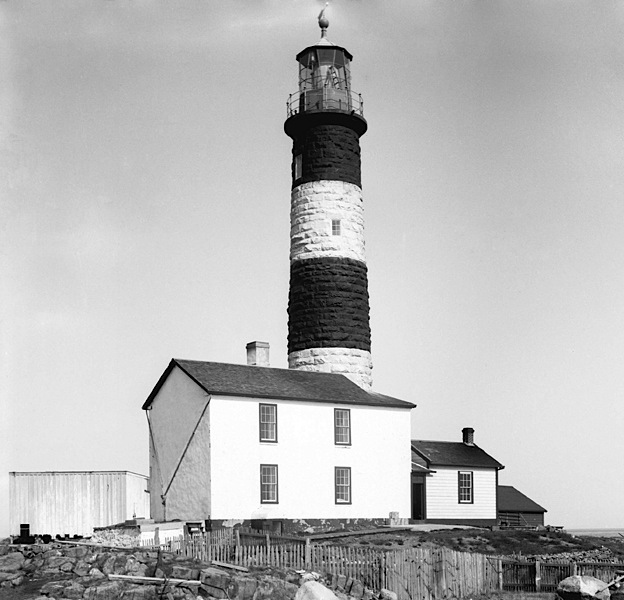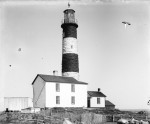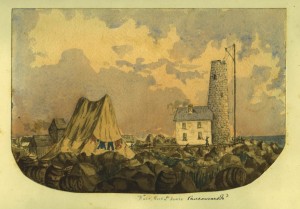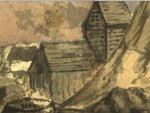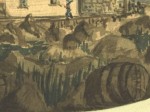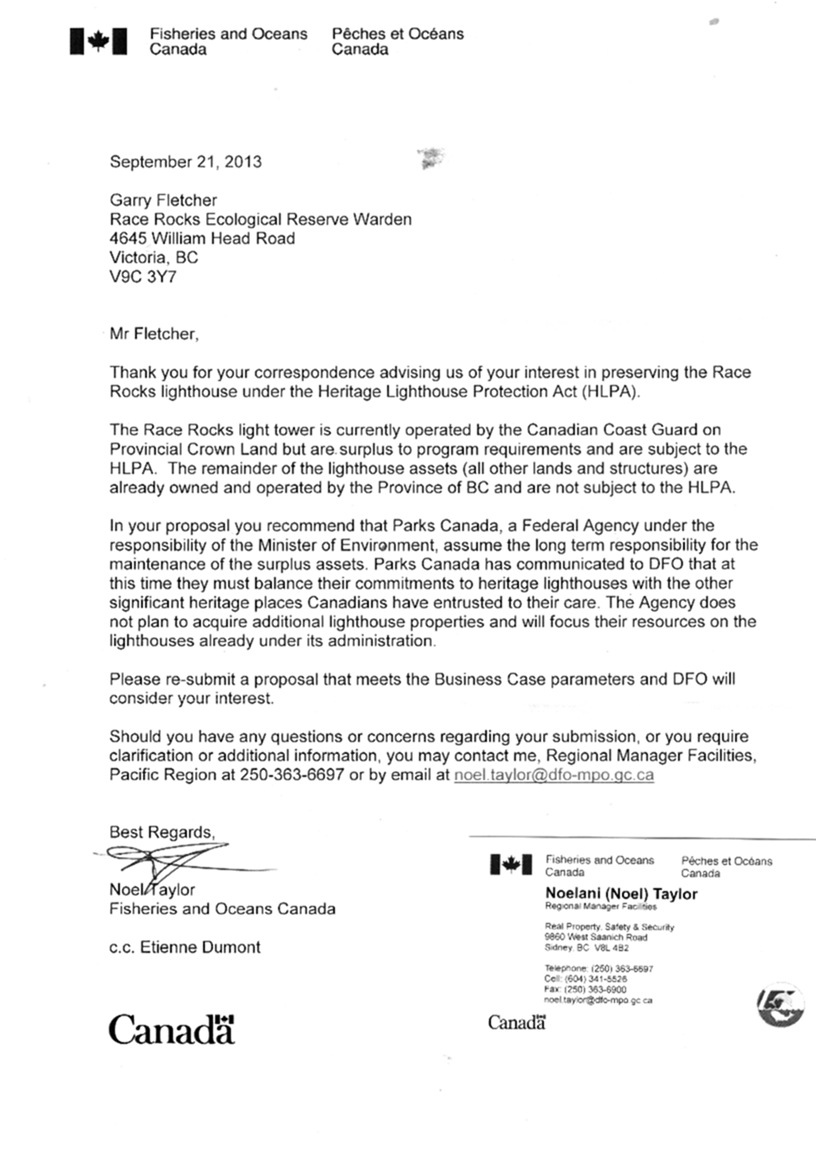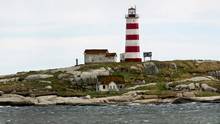High clouds settled in today and there were even a few minute raindrops for a short time in the late morning and early evening. Hazy marine air was evident along the coast to Victoria while across on the American side, it looked like it might really be raining in the Elwha Valley, Olympic National Park. The barometer continues its slow slide, which started last Thursday. The westerly wind is forecast again for tomorrow and it has already started.
A Humpback Whale feeding and resting to the south of the rocks and Killer Whales to the west, continued to draw whale–watching boats from Victoria and a total of 22 were noted in the Ecological Reserve today, mostly observing pinnipeds (Steller’s and California Sea Lions, Harbour and Elephant Seals). One commercial, charter, fishing boat also stopped by to watch the sea lions.
One of the Brown Pelicans came back today and some members of the Victoria Historical Society group saw it on their way out to the island. Three groups of twelve people each had historical tours of Race Rocks today.
The historians were very interested in Garry Fletcher’s on-site presentations about the history of Great Race Island, the 500 year-old plus, indigenous rock cairns and the 154 year history of the Lighthouse. Race Rocks is designated as a heritage site but that only means it is registered in Ottawa, not offered any conservation protection. The Race Rocks Ecological Reserve protects Race Rocks’ biodiversity and natural history and is part of BC Parks, but it does not include human history.
Federal law passed specifically three years ago to protect historical lighthouses does not apply to the six original Imperial Lighthouses, of which this is one. Race Rocks light-tower pre-dates the confederation of Canada and it is the only stone-constructed light tower and one of a handful of standing stone structures this old, in western Canada. It needs protection. You can learn more about its’ fascinating history through this web-site under history. There is even historical video footage of the demolition of the historic, granite, light-keeper’s house in the 1960s by bulldozer and explosives. Fisgard Light which was completed six weeks before Race Rocks is a much less impressive brick tower and is endowed with full heritage protection by Parks Canada.
With 37 visitors to attend to, I did not spend much time making ecological observations today. I did a few maintenance chores before they arrived, washing windows, sweeping the main walk-way with an historical broom and weed-eating around the fly wheels of an old Fairbanks-Morse engine from the turn of the last century, with an historical weed-eater from late in the last century. There are quite a few pieces of old Fairbanks-Morse machinery lying around that could be of historical interest. Here is a YouTube link to a similar 1906 Fairbanks-Morse engine, running. What a beast. http://www.youtube.com/watch?v=jTiK2B88EJs
My last tasks of the day are to move deionized water, delivered with the guests by Courtney on MV Second Nature, up to the energy building, and to make fresh water with the desalinator, while the historic Lister generator tops up the batteries which are powered mostly by solar panels.
